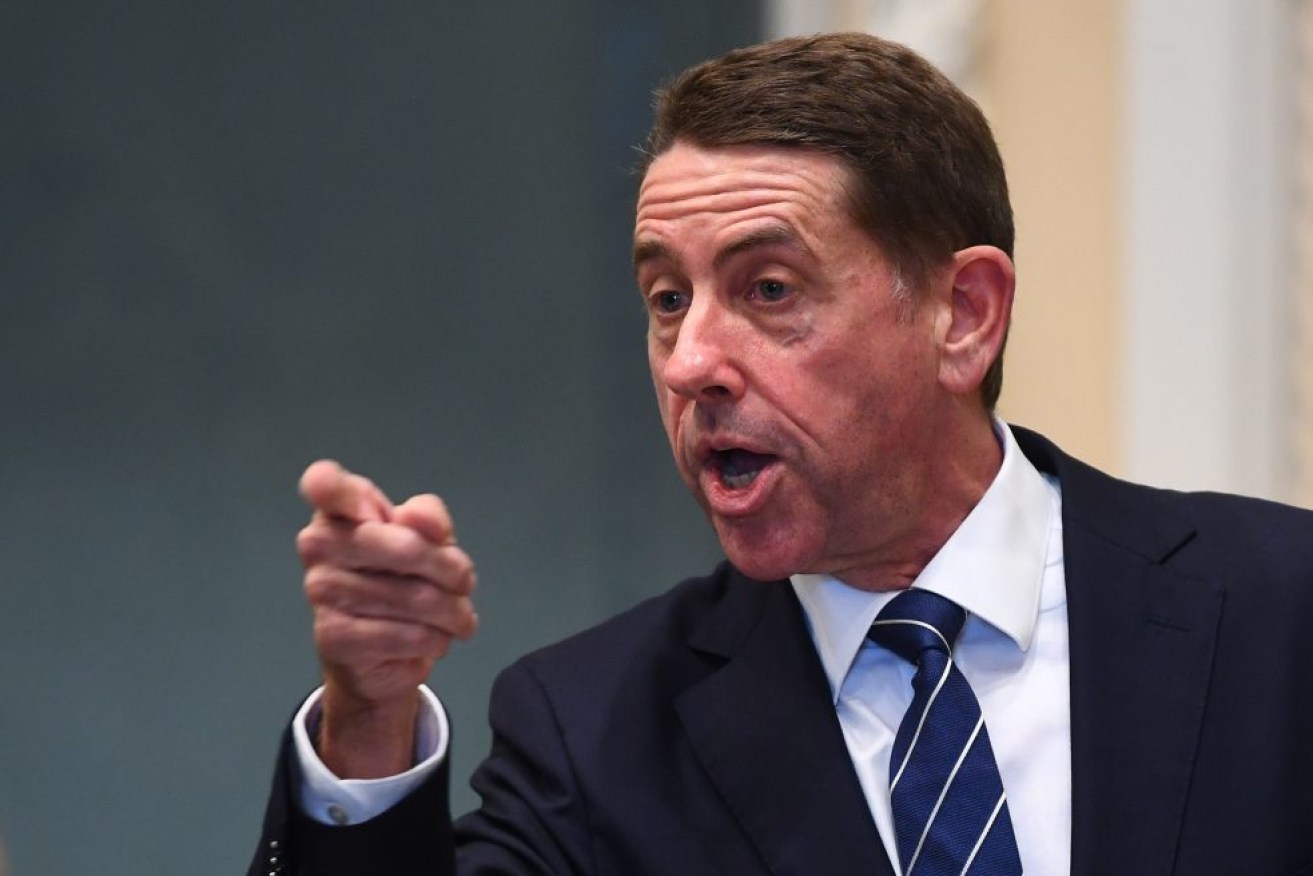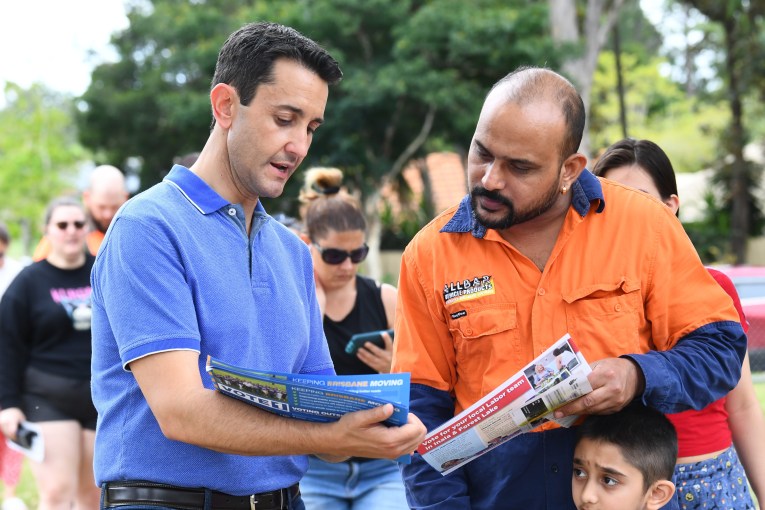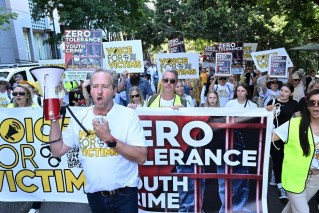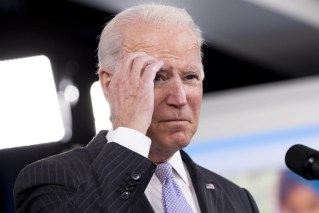Everyone needs to step up: Dick defends state’s record on housing crisis
Queensland Treasurer Cameron Dick has referred growing calls for a housing summit to the premier, but says the government is already “doing our bit” to fix the crisis.

Treasurer Cameron Dick. (AAP Image/Jono Searle)
The state has a chronic residential property shortage with almost 27,437 households on the waiting list for government housing on June 2.
Rental vacancy rates were “incredibly tight and relatively flat”, at below 1.0 per cent in the June quarter, compared to a healthy range between 2.6 and 3.5 per cent, according to the Real Estate Institute of Queensland.
The squeeze has intensified due to interstate migration, which the nation’s top rate of incomers, and recent floods leaving thousands of homes uninhabitable.
The Property Council reported that another 220,000 interstate migrants were looking to head to Queensland over the next five years, adding to a predicted shortfall of 36,000 housing lots by 2030.
Social service organisations, charities, local governments, the property sector, industry groups and the state’s construction lobby have been calling for a housing summit since October.
Dick said it was up to Premier Annastacia Palaszczuk to decide whether a summit is needed.
“We’re the place to be, and people are moving here in droves because of good jobs, better services and the great Queensland lifestyle, so we’re doing our bit as a government investing in more housing, opening up more land, which is one of the big challenges, making sure we have more land coming to market,” he told reporters on Thursday.
“I know councils are doing their bit, but we all have to do more, and the federal government of course, has a role to play as well, so we’ll continue to do what we have to do as a state.”
It said there had been no new major land releases in the Brisbane urban footprint since 2005 and called for a major overhaul of housing supply and planning as well as incentives to developers for build-to-rent projects.
A report released along with the survey results showed that in 2002, the median detached dwelling price in Brisbane was around 4.5 times the average annual wage for a Queenslander. In 2022, the same ratio was now over 10 times and rising.
And it warned the 2032 Olympics could worsen the issue and leave a legacy of unaffordable housing.
It claimed that Queensland’s planning system was ill equipped to respond to changing market demand, was too slow and delivered too little land. The cost base of new land and housing was also found to be too high.
The State Government has responded by calling for an expert panel’s advice on what more local government could do, claiming some councils had out-of-date housing strategies, while Opposition Leader David Crisafulli has called for a housing summit.
Deputy Premier Steven Miles said he met with the Local Government Association of Queensland three weeks ago and offered to assist councils to expand housing supply.
The Property Council report said the concerns about adequacy of supply were backed up by a study, which found that from now until 2030, active supply capacity in South East Queensland was predicted to average 1100 lots a month, while peak demand is expected to average 1400 lots a month.
“This represents a shortfall of 36,000 lots in the period 2020-2030,” the report found.
The Property Council survey found one in 20 people in Sydney and Melbourne were “definitely or probably” looking to move interstate in the next five years and about two-thirds were eager to make the shift to Queensland.
“And what this means, is we need a plan to prepare, not only to protect our enviable lifestyle, but also ensure we have the infrastructure and housing supply to support the population growth, so that we can all enjoy the best of Queensland,” the council’s Queensland executive director Jen Williams said
Lifestyle and climate were the highest motivators for a move (both 76 per cent), the relative affordability of housing was also a major driver, with 68 per cent of respondents citing the issue as a reason to move north. More than half said work opportunities were a factor as well.
Southerners polled in the research were keen on the Gold and Sunshine coasts as well as Brisbane and existing south east Queensland residents were found to be concerned about the impacts to housing affordability, but relatively unconcerned about the influx itself.
“Queensland is at the precipice when it comes to housing. Bold decisions must be made right now,” Williams said.
“The time is right to bring together experts across industry, government and community sectors, to kickstart a bold reform agenda that will turbocharge the delivery of new housing across the state.
She said the research showed that while Queensland experienced a huge influx of interstate migrants during the COVID-19 pandemic, there were potentially many more to come.
“Since the original South East Queensland Regional Plan document in 2005, the Property Council has consistently voiced concerns regarding land supply in SEQ and its impact on affordability,” the report said.
“With no new major land releases in the urban footprint since 2005, we are now experiencing the outcome of limited supply and onerous and restrictive planning policy that reduces dwelling supply.”
“Such a significant shortage will only lead to worsening housing availability and affordability. The Property Council and its members have long voiced concerns that Queensland would arrive at this point, sooner rather than later.
“The Games have the potential to leave a legacy of unaffordable housing, resulting in far-reaching social issues and the prospect of a generation who will never achieve home ownership, and our most vulnerable at a greater risk of homelessness.”
The LNP claims there were about 50,000 people waiting for social housing in Queensland and 20 per cent of the homes the State Government promised to deliver in 2017 had not been built.
Opposition Leader David Crisafulli said a summit was urgently needed, adding he would host it himself if the government doesn’t.
He said the government had to work harder to help councils release land for new housing to stop the “feeding frenzy” in the market.
“I’m sorry, it can’t be that every council across the state has failed,” Crisafulli told reporters.
“There’s one common theme, and that is the state government.”
Dick insisted the state government was already investing in infrastructure such as roads, water and sewage to allow councils to open up land for new housing.
He also blamed the current crunch on other factors such as the changing structure of households and a renovation boom.
The average number of people living in a Queensland house had dropped from 2.6 to 2.5 between 2016 and 2020, adding another 60,000 people to the market, he said.
Dick said large numbers of people renovating their homes had increased housing demand, but the government expects that to moderate in 2023.
-with John McCarthy












